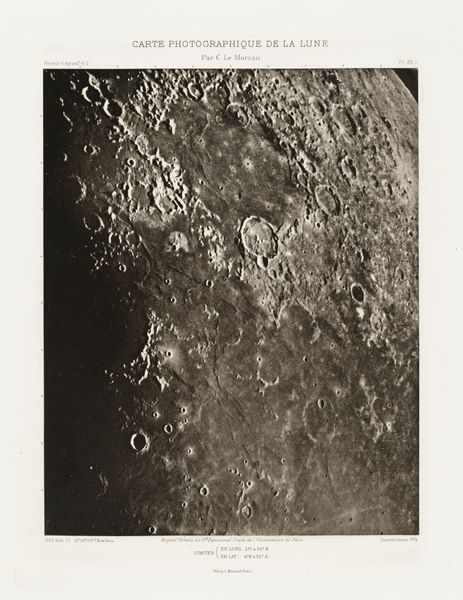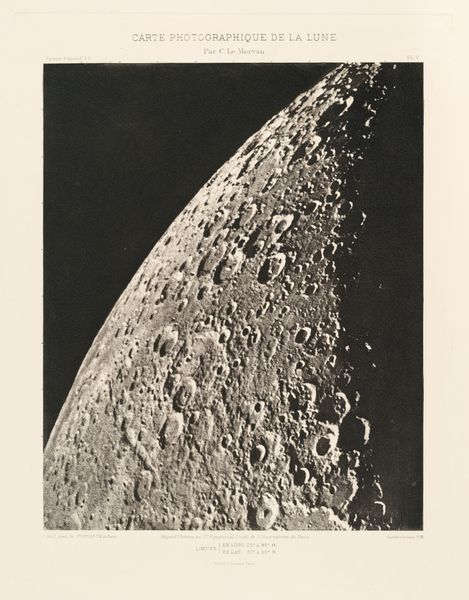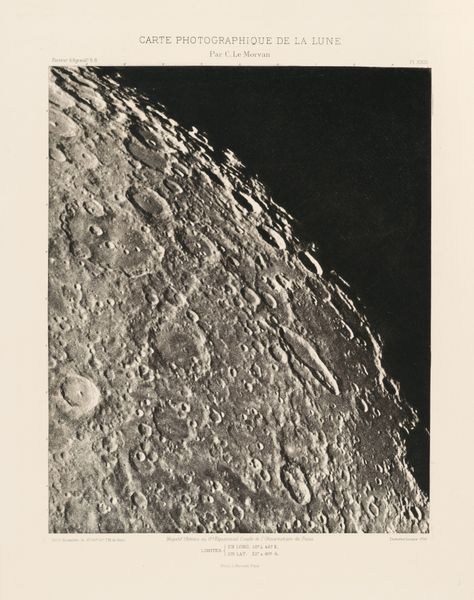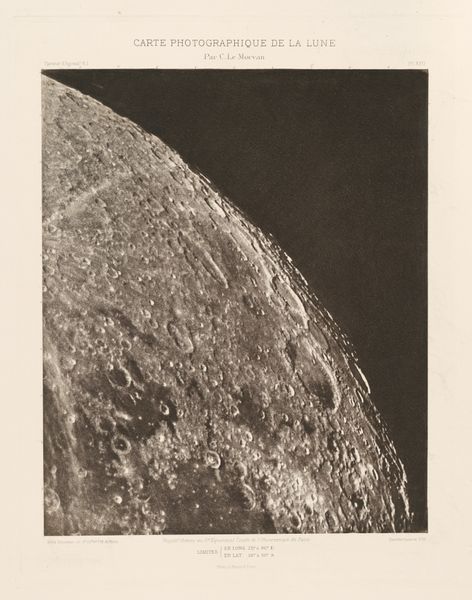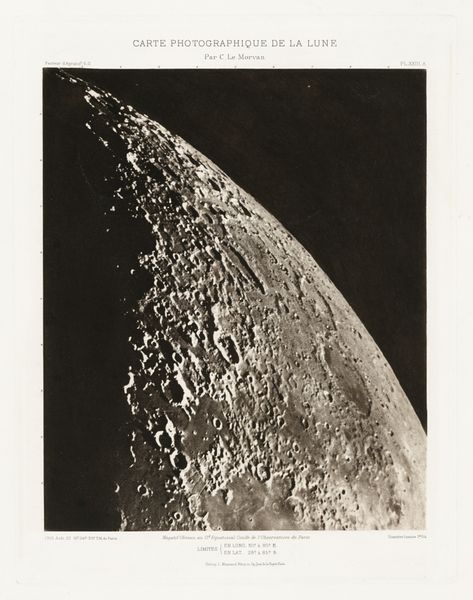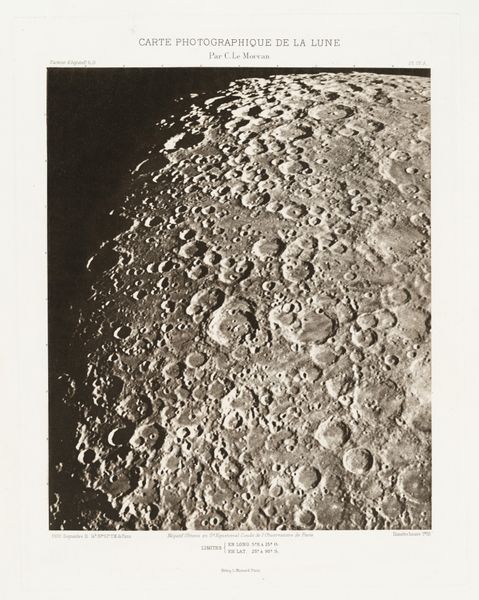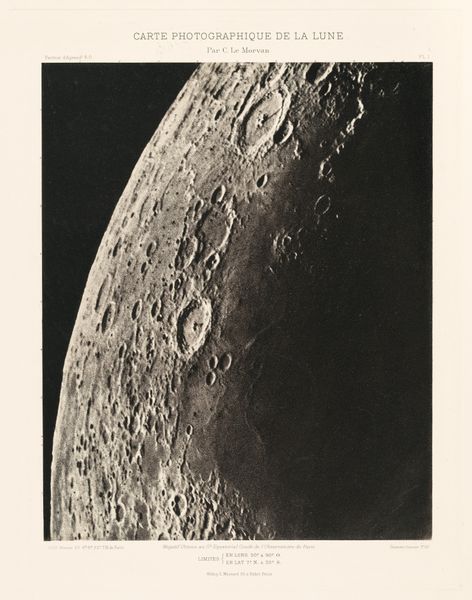
print, photography
# print
#
landscape
#
photography
#
geometric
#
realism
Dimensions: height 570 mm, width 467 mm, height 796 mm, width 599 mm
Copyright: Rijks Museum: Open Domain
Curator: At first glance, it looks like a brain...or maybe a sponge, all those intricate textures and hidden depths revealed in shades of grey. Editor: Here we have “Maanlandschap,” or “Lunar Landscape,” a photograph, potentially created between 1899 and 1910, credited to M.M. Loewy and Puiseux. The inscription at the top even specifies that we are looking at “Rayonnement de Tycho - Phase Croissante”. This would put us in the lunar crater Tycho! Curator: So, it's a photograph...of the moon. Well, the magic kind of faded there. It feels less…personal now that I know it's literally not of this earth! All that cratered surface; you could fall into them forever. Editor: Yes, photography at this time was starting to find a voice documenting realities beyond our immediate senses. While photography may seem to kill your subjective, perhaps romantic view of this object, I see something far more universal. A way to bridge lived reality to a place very few people would see firsthand. Curator: Fair point. Still, look at the composition. It almost feels like a conscious choice, tilting the perspective just so, letting that curvature lead the eye—a little like what Turner might have done with a storm-tossed sea. Were Loewy and Puiseux thinking like painters as well as scientists? Editor: Precisely! Remember the power structures that dictated whose perspective counted. Art academies often scorned photography precisely for its “mechanical” objectivity. Images like this, however, stake a claim for photography as a method, of truth-telling, of democratizing seeing, if you will. Curator: I do get a strong sense of wanting to show, almost tell a story about something new. Thank you for reframing the context for me—makes one ponder the role of observation itself! Editor: It’s fascinating to consider how such an image could, at once, document scientific observation but also ignite our imagination. I think this photograph does precisely that and bridges disciplines to broaden public education, not limit it.
Comments
No comments
Be the first to comment and join the conversation on the ultimate creative platform.

